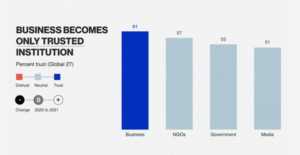If you’ve heard the term Revenue Operations, or RevOps, in the last few months, you’re not alone. And if you’re not quite sure what it means, you’re also not alone.
RevOps may seem like another business buzzword, but it’s not. It’s gaining traction within companies looking to streamline their processes, get real value from their tech stack, and stay ahead of the competition.
Do you want to be one of those organizations? Then keep reading to learn more about RevOps.
Defining RevOps
When the different departments within your company work independently – even if they have the same goal of delighting your end-user- silos can sprout. The business philosophy of RevOps was born to eliminate this issue. It aligns sales, marketing, and service by structuring every operation involved in creating the perfect customer experience. That includes the tools each department uses as well as the platform utilized for managing revenue.
Why You Should Care About RevOps
Before RevOps, most companies saw revenue generation as a series of individual deals. They hoped the next one would be bigger than the last and so on until they reached their ultimate goal. RevOps encourages ongoing revenue by looking at is a systematic process that your organization can improve over time. In fact, recent studies show that companies committing to RevOps saw growth of nearly three times that of their counterparts. Other reasons to take note of RevOps include:
- Prevents the “stop and go” or lull periods of sales growth
- Connects processes, teams, and technology, eliminating silos and strengthening collaboration
- Offers a closed loop look at the entire organization
- Proves ROI for investments or strategies
- Creates a share focus on your company’s success
Essentially, RevOps serves as a way to operationalize the execution of sales, marketing, and service contributions to your business’s bottom line. If you deploy RevOps, you’re essentially building a comprehensive end-to-end strategy to boost revenue at the moment when a potential customer becomes aware of your services well after they’ve signed the dotted line.
How to Tell You Need RevOps
When you’re new to the idea of RevOps, it may be challenging to determine if your company needs to deploy the strategy. In most cases, businesses with a robust tech stack and some resemblance of a data strategy are already on their way toward RevOps. Here’s how to know for sure if it’s time to start thinking about RevOps more earnestly:
- You have too many tools or aren’t using all of them
- Your sales, marketing, and service teams’ platforms aren’t integrated or speaking to each other
- Internal processes, training materials, or enablement pieces are broken in any way
- It’s too difficult to find the data you need for any given project
- You have trouble determining the ROI of your efforts – small or large
As noted, if you already have tools like a CRM, marketing automation platform, or operations software in place, you may not need a complete overhaul of your technology. You may need to have an honest discussion about how your company is using them. This way, you can reevaluate your use cases and communication to build a better customer experience. You can work toward your RevOps strategy by:
- Auditing the technology you use and making adjustments (integrations, new platforms like HubSpot’s Operations Hub, eliminations, etc.)
- Getting together with your teams to determine how best to align them and introduce RevOps
- Eliminating mundane or tedious tasks through automation
- Measuring and optimizing
For that last one, specific KPIs like customer acquisition cost, customer onboarding cost, average contract value, and net revenue per quarter can signify if RevOps is positively impacting your growth.
Wrapping Up
RevOps may be a fairly new term, but it’s here to stay. So much so that HubSpot launched Operations Hub, an entire platform to help you get started. Because it’s part of the existing HubSpot ecosystem, it’ll facilitate collaboration and enable a seamless flow of data between departments. However, if you’re not quite ready for a new tech solution, we can help in another way: by integrating your current systems! Check out the SyncSmart website for a list of packaged apps, or reach out to the team to discuss a more custom option.
![]()




